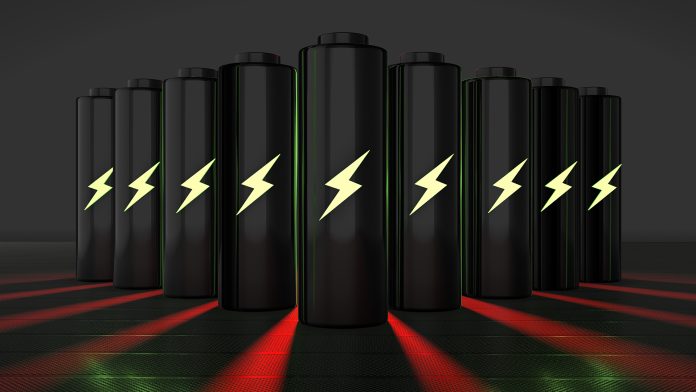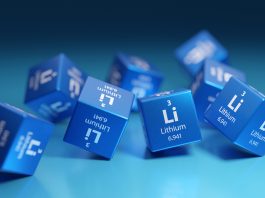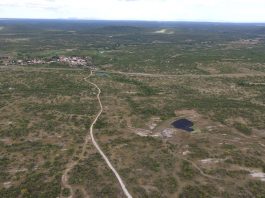Oceana Lithium (ASX:OCN) is making promising exploration progress at its Solonopole Lithium Project in Ceara State, Brazil, after significantly increasing its ground position in the area and identifying spodumene mineralisation on the newly optioned ground.
In January, ASX-listed Oceana Lithium (ASX:OCN) signed a binding option agreement with N Green Minerals, giving it the right to acquire a 100% interest in Exploration Licences 800306/2020 and 800307/2020, including the rights to all minerals but excluding gemstones.
The Solonopole Lithium Project
Both permits are located within the Solonopole Lithium Project area and have added a further 9.28km2 to the initial 114km2 Solonopole tenement package held by Oceana’s wholly-owned Brazilian subsidiary, Ceara Litio Mineracao.
The rationale behind acquiring the permits included that they host the Bom Jesus de Baixo pegmatite located on the western end of a 500m-long series of pegmatite outcrops lying along the same strike.
Oceana noted at the time the acquisition was announced that, if it can be proven that the outcrops are linked, this pegmatite would be the largest well-zoned lithium-caesium-tantalum (LCT) pegmatite identified in the Solonopole project area to date.
Historically, tourmaline gemstones and dimension stone were extracted from a quarry at Bom Jesus de Baixo, exposing the pegmatite in the process.
In early March 2023, Oceana reported that grab samples taken from the Mina Bom Jesus de Baixo pit walls and floor had returned results confirming the presence of high-grade lithium minerals, including spodumene (reported up to 1.87% Li2O), lepidolite (reported up to 3.09% Li2O) and amblygonite (reported up to 3.61% Li2O).
The spodumene sampled was collected from the eastern and western extremities of the pit walls.
Gino Vitale, Chairman of Oceana Lithium, said: “The confirmed presence of spodumene has boosted Oceana’s confidence not only in the quality of the Mina Bom Jesus de Baixo target but in the prospectivity of the Solonopole Lithium Project as a whole.
“Multiple lithium-bearing minerals and potential zonation present in our ground indicate substantial lithium enrichment in this well-recognised LCT pegmatite district.
“A maiden drilling programme is planned to determine the actual dimension, strike, and dip of the Bom Jesus de Baixo pegmatite, which is difficult to map from the surface due to limited outcropping exposures.
“Planning for the drilling campaign is well advanced, and we look forward to commencing testing of this highly prospective target.”
At the time of publication, Oceana is close to starting a 3,000m reverse circulation drilling programme focusing on the pit area and surrounds but also testing a number of targets identified on its initial Solonopole landholding.
The Napperby Lithium Project
The other asset in the company’s portfolio is the Napperby Lithium Project in the Northern Territory, Australia, where exploration is also moving ahead but is at an earlier stage than Solonopole.
Napperby consists of a granted exploration licence (EL 32836) covering an area of ~650km2 and an exploration licence application (ELA 32841) covering an area of more than 512km2.
During Q4 of 2022, HyVista Corporation was commissioned to conduct an airborne hyperspectral survey over the project area. The survey has been completed and the interpretation of results is pending.
Extensive research
Oceana is also part of a joint research programme with the Centre for Exploration Targeting at the University of Western Australia and a number of other exploration companies focusing on the North Arunta pegmatite province, in which the Napperby Lithium Project is located.
One of the reasons for establishing the research programme has been addressing the dearth of systematically acquired structural and petrogenetic data on the Arunta province, which consequently has delayed systematic, cost-effective exploration targeting using modern geochemical, hyperspectral, and mineralogical tools.
Results from the hyperspectral survey and the technical collaboration research project are expected to complement the company’s field exploration activities at Napperby and aid in generating and ranking large-scale targets.
Multiple pegmatite dykes with tin and tantalum occurrence have been identified on the lithium project tenements, and work by the Northern Territory Geological Survey in 2005 confirmed that the pegmatites in the area were of the LCT variety.
Notably, Rio Tinto Exploration recently lodged an application for EL33135, the tenement immediately to the south of EL32836, one of the two tenements that form the Napperby project.
Expert-led exploration
Oceana’s lithium project efforts in Brazil and Australia are headed up by Senior Exploration Manager James Abson, an experienced lithium geologist who was most recently Chief Geologist and Exploration Manager for Bikita Minerals, which operates its namesake mine in Zimbabwe.
Abson is assisted by Renato Braz Sue, who is the company’s Exploration Manager for Brazil. Braz Sue has worked for the likes of Yamana Gold, Anglogold Ashanti, Vale/Phelps Dodge, Horizonte Minerals, Xstrata/Jaguar Mining, and Eldorado Gold Corp in his native country.
Please note, this article will also appear in the fourteenth edition of our quarterly publication.









